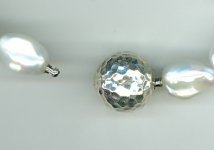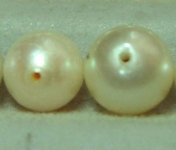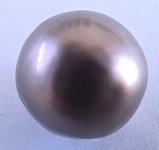C
CLICLASP
Guest
Hello,
I am very found of keshis and had always though these were made of pure nacre. Meaning for me, full pure nacre from center to surface... So I was much surprised when drilling 15 mm south sea keshis, in order to put a clasp into, to see they were hollow pearls!
So I wonder what is the growth process that makes an "empty" pearl ? Looks like nacre bubbling over a hole, what strange !
Thanks a lot for clarifying info
I am very found of keshis and had always though these were made of pure nacre. Meaning for me, full pure nacre from center to surface... So I was much surprised when drilling 15 mm south sea keshis, in order to put a clasp into, to see they were hollow pearls!
So I wonder what is the growth process that makes an "empty" pearl ? Looks like nacre bubbling over a hole, what strange !
Thanks a lot for clarifying info



